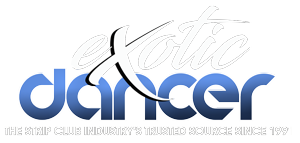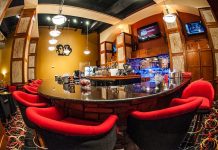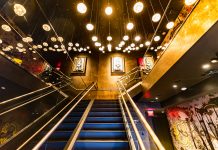Pour control, spillage, theft, slow bar service, menus that suck—these are just a few of the 10 critical errors bar managers make. Bar Media’s Robert Plotkin doesn’t just point out the errors, he offers advice on how to tackle each one of these problem areas to increase your bar’s profitability.
As the adage goes, “When a man with money meets a man with experience, the man with the experience ends up with the money, and the man with the money ends up with the experience.”
Experience affords you perspective, an invaluable advantage in business. Like a photograph snapped from a satellite in geosynchronous orbit, experience allows you to see the big picture, to view your business from an expanded perspective. Experience also lets you identify potential problems and pitfalls before you actually blunder into them, another indispensable attribute.
As any teacher will tell you, making mistakes is an essential part of the learning curve. Some things you just have to learn at the school of hard knocks. Perhaps the keys to success, however, are keeping your mistakes to a minimum, and striving to keep the learning curve short and shallow. While avoiding as many mistakes as you can hardly guarantees success, it will certainly help you avoid the alternative.
In the beverage business, there are a number of critical errors that should be avoided like the plague. Every industry has them, ours is no different. Here then is our list of the ten critical errors beverage operators make.
Error #1:
Inventory control is not a priority
Running a bar requires making a significant investment in liquid assets, liquid that can disappear without a corresponding sale at an alarming rate. Failing to implement an effective inventory control system places at risk the capital you’ve invested in that inventory. To be profitable, you should have the capability of knowing exactly what inventory you have, what you paid for it, at what rate you use it, and exactly where it is at any point in time. Tracking inventory throughout your operation has been greatly facilitated by technology. Advancements such as AccuBar have made it possible to be more accurate and invest less time in the process.
Error #2:
Pour costs are not monitored
One of the many truisms in this business is, “If you can’t measure it, you can’t manage it.” Nowhere is that truer than behind the bar. Determining your bar’s ongoing cost percentages and pour costs reveals your level of profitability. As your cost of goods sold increases, gross profits diminish. Success behind the bar greatly depends on maintaining and safeguarding your profit margins. No profit, no success. Tracking your cost percentages is a fundamental form of control-the more frequently you conduct an audit and determine your pour costs, the more insight you’ll have into your operation. If the audit indicates a problem, you’ll be able to respond quickly and with specific, timely information in-hand. Microchip technology has provided a huge boost for beverage operators in accurately tracking cost percentages. One such boost is AccuBar, which will quickly enable you to devise what your ongoing costs are, what they should be and where any potential areas of shrinkage may be. If it’s a jungle out there, this might provide the ultimate protection.
Error #3:
“Weak link” employees
Your business is only as strong and vital as your weakest employee. The bartending staff impacts every aspect of your operation, from portioning and marketing your bill of fare, to rendering prompt and gracious hospitality to your clientele. Through their hands pass your cash flow. It is therefore critical to assemble the most professional staff you can. One of the most important steps in the process is establishing an on-going training program. What your people don’t know can most certainly hurt you. Their lack of expertise reflects poorly on your business, and prevents them from attaining their potential. Ongoing training is an investment, not a hardship.
Error #4:
Lack of portion control
In some respects, the underlying proposition of the beverage business is fundamentally unstable. It involves you taking your hard-earned working capital, investing it in liquid and then asking your hourly employees to exchange that liquid back into more working capital than you had originally. One of the crucial disciplines to instill into your operation is strict portioning controls. Over-pouring is an insidious source of losses. It also hastens and exacerbates intoxication.
Another plague of the beverage business is the scourge of shrinkage. Bartenders control both ends of every transaction at the bar. They portion and prepare product, as well as handle all sales proceeds. Compounding the peril, this all occurs before your register or POS system knows anything about the transaction. For some, the temptations of handling a steady stream of cash can be irresistible. Take pains to implement solid cash controls and look to reduce your vulnerability to theft. The savings often spell the difference between financial viability and the unpleasant alternative.
Productivity measures employee sales per hour, and is computed by dividing the shift’s gross sales by the number of hours the bartender worked. An employee with chronically low sales per hour may indicate a serious problem.
Error #5:
Slow bar service
Every industry tracks employee productivity except ours. Calculating sales per hour is easily done and is an enormously effective means of assessing employee effectiveness. Productivity measures employee sales per hour, and is computed by dividing the shift’s gross sales by the number of hours the bartender worked. An employee with chronically low sales per hour may indicate a serious problem.
If a bartender’s sales per hour comes in consistently below the staff average, five things are possible. He may move too slowly and literally can’t keep up with demand. He could make lousy drinks, so people don’t stick around for a second or third lousy drink. Three, his personality and attitude could be so off-putting that customers leave early. His sales ability could be so unrefined that he consistently undersells.
Finally, he could be stealing. There isn’t a method of stealing that won’t negatively affect productivity. On the positive side, a bartender with consistently high sales per hour deserves acknowledgement. Either way you look at it, tracking productivity is highly beneficial.
Error #6:
Draft beer spillage and theft
Industry wide, we lose roughly 20% of the draft beer we purchase due to waste, spillage and theft. That translates to one out of every five kegs of beer. With interest in draft beer soaring, clamping down on draft costs is essential. Proper maintenance of the draft beer delivery system and staff training are fundamentally important. Operations that depend on draft beer sales to remain financially viable should consider investing in a draft beer control system. These technological wonders are capable of tracking every ounce of product dispensed and providing a report detailing exact usage information and shift cost percentages per brand. Draft beer has always been something of a black hole for operators. These micro-processor driven systems have successfully plumbed the darkness and revived the category’s profitability.
Error #7:
Your bar menu and/or recipes suck
A restaurant that doesn’t routinely change its menu always has plenty of open tables. Same, too, with bars. Add some pizzazz to your beverage lineup. Shake up your specialty drinks. Change will spice things up and help keep your clientele interested. Likewise, bartending staffs typically operate without a clearly defined set of recipes. The result is a loss of product consistency, fluctuating costs, and shoddy, hit-or-miss drinks. Determine what they’re to pour, or they’ll do it for you.
Error #8:
Boring drink specials
The only marketing some operators do is to slash prices during happy hour. Strive instead to promote your business from the inside out. People are open and receptive to timely suggestions on what to drink. Develop bar menus, table tents, wipe off boards on which to market your house specialties. If you’ve created interesting, delicious signature drinks, make sure you announce your success. You’ll likely notice that sales for whatever you actively promote will skyrocket.
Error #9:
No bartender/employee handbook
Get a new car and you get an owner’s manual. Get drafted into the NBA or NFL and they’ll give you a playbook. Get hired as a bartender or food server and you’ll likely get a handshake, three training shifts and photocopies of house policies. Is that all you give to your employees? Employing someone is fraught with legal ramifications. Make a mistake and you could find yourself on the wrong end of a civil lawsuit or in front of the National Labor Relations Board, where nine out of ten employees leave victorious. Suits for wrongful discharge, sexual harassment and racial discrimination are among the most prevalent employment related litigation with judgments averaging in the six-figure range.
The first line of legal defense is a comprehensive, well-structured employee handbook, one that clearly defines the employees’ job descriptions, areas of responsibilities, and all the operation’s policies and procedures. Without it, legally holding employees accountable for their actions is practically impossible. The employee handbook has the potential for becoming more than just a legal document delineating operational policies and procedures. It presents a singular opportunity to provide employees with insight into what is expected of them as professionals and how they can best achieve those expectations.
Error #10:
No “leadership”
Things are managed, people are led. Make every effort to become a dynamic leader, one who leads by example. Your staff is the lifeblood of your operation, without whom all enterprise ceases. Acknowledge and encourage their efforts, and nearly all other management issues will abate.
ROBERT PLOTKIN is the president of the National Bar & Restaurant Association and author of numerous books including Successful Beverage Management- Proven Strategies for the On-Premise Operator. He can be reached at Barmedia, 800-421-7179, or e-mail him at robert@barmedia.com.

















 Productivity measures employee sales per hour, and is computed by dividing the shift’s gross sales by the number of hours the bartender worked. An employee with chronically low sales per hour may indicate a serious problem.
Productivity measures employee sales per hour, and is computed by dividing the shift’s gross sales by the number of hours the bartender worked. An employee with chronically low sales per hour may indicate a serious problem.











